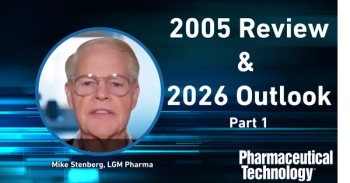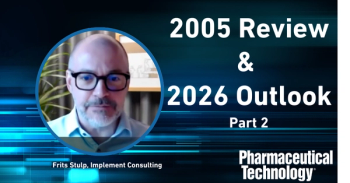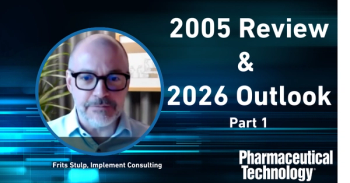
- Pharmaceutical Technology-12-02-2015
- Volume 39
- Issue 12
Market Access Outlook for Canada
The author provides an overview of the key aspects of the current Canadian pharmaceutical market.
Canada remains the ninth largest pharmaceutical market in the world, close to Spain and the United Kingdom. Drug makers operating in Canada have benefited from high per capita spending on pharmaceuticals and rising procurement as a result of the country’s aging population. In 2014 alone, the country spent an estimated $28.8 billion on prescribed drugs (1). Moreover, Canada’s private payer system, which covers as much as two-thirds of the country’s population, has been far less restrictive than market-access decision-makers in many European markets (2). These stats, taken together, show how the Canadian market has historically offered most manufacturers the potential for profitability.
Moving forward, however, manufacturers may find it increasingly difficult to capitalize on this market’s potential, for a number of reasons. Scrutiny regarding drug pricing and questions about drug value continue to mount from a host of different stakeholders. Canada’s complex healthcare system, coupled with distinct differences between each of the country’s provinces and payers, is likely to continue creating hurdles for achieving optimal market access. At the same time, smaller emerging economies are now projected to have greater potential for growth than Canada in the coming years. For these reasons, some manufacturers may be tempted to overlook the Canadian market or simply treat it as an extension of the United States. Given the size and demographics of Canada’s patient population, however, this approach is unwise.
Rather, manufacturers will need to understand specific nuances-both at a country level and at a provincial level-and prepare accordingly. The Canadian pharmaceutical market is changing against the backdrop of growing frustration over drug pricing and questions regarding sustainability. Key market themes include health technology assessment harmonization, more uniform pricing negotiations across providences, regulations regarding the price of generics, and a potential movement toward universal public drug coverage. This article provides an overview of the key aspects of the current Canadian pharmaceutical market and highlights some recent developments as well as their implications for pharmaceutical manufacturers.
The Canadian healthcare systemPublic and private insurance coverage and drug expenditure. Similar to many other industrialized countries, the Canadian healthcare system is a hybrid of both public and private health coverage, with elements of both single payer and private insurance models. However, two things make Canada’s public-private mix unique. First, Canada’s national healthcare system offers public funding for all medically necessary hospital and physician services. Second, there is rather limited public coverage for outpatient prescription drugs outside of seniors and people on social assistance. In fact, approximately 68% of the population obtains drug coverage through private insurers, either through their employers or purchased individually (2).
In 2014, it is estimated that $12.1 billion (42%) of non-hospital prescribed drug spending was financed by the public sector, $10.3 billion (35.8%) by private insurers, and $6.4 billion (22.2%) by Canadian out-of-pocket expenditures (1). Canada’s public sector is fragmented into 13 provinces and territories with Ontario, Quebec, British Columbia, and Alberta making up the four most populous provinces. Given that approximately 86% of the country’s population lives in these four provinces, it’s not surprising that public drug spending is heavily concentrated in these areas as well (3–4).
Canada, like many countries, is facing escalating healthcare costs, as payers everywhere are struggling to reconcile finite drug budgets with patient access to promising new health technologies. Canada ranks second among 31 of The Organization of Economic Co-operation and Development (OECD) nations with respect to expenditure on pharmaceuticals per capita (US$761 adjusted for price differences) (5). Taken together with the fact that drug costs represent 17.5% of their healthcare spending, growing concerns around economic sustainability have prompted stakeholders to propose a number of different strategies to curb drug expenditures in this market.
Private plan design and universal drug coverage. To date, employers and insurers have demonstrated little effort to implement cost-containment measures in private drug plans (e.g., mandatory generic substitution or restrictions on more expensive but not therapeutically superior new drugs) (2). This is in stark contrast to aggressively managed public plans that rely on strict formularies. These private, open insurance plans have been particularly attractive for pharmaceutical manufacturers over the years due to accelerated access and more flexible pricing regulations. However, as issues pertaining to cost and sustainability continue to come under the microscope, these “open-access” plans are no exception.
In fact, it is estimated that private drug plans in Canada wasted $5.1 billion in 2012, which is money spent without receiving therapeutic benefit in return (6). There are now increasing calls for private insurers to consider more coverage restrictions and to place greater emphasis on effectiveness, safety, and value for money (7).
Perhaps a more serious threat to the private sector and to manufacturers operating in this market has been the renewed focus on overhauling the country’s health system to include universal drug coverage. Although not a new topic of discussion, efforts around a universal drug program have intensified-including a Pharmacare 2020 report prepared by some of Canada’s more renowned policy experts (8). This issue was also front-and-center in the lead-up to the 2015 federal election with certain groups expressing their commitment to making Pharmacare a reality (9). The results of the 2015 election, however, suggest that initial policy efforts to improve access and reduce drug costs will focus more on bulk purchasing for public coverage (10). It is too early to understand how these efforts will impact the private sector.
Harmonizing market access. Canada presents manufacturers with a unique and challenging pathway to market access. A report found 46 federal, provincial, and territorial drug programs in Canada’s public sector alone with each having its own administration, bureaucracy, timelines, and priorities (11). In addition, individual hospitals are responsible for developing their own formularies for government-funded drugs administered to patients on an inpatient basis. Finally, private payers are responsible for making drug coverage and pricing decisions for their members.
This mosaic of entities responsible for public coverage, reimbursement, and pricing decisions has created hurdles for manufacturers in the form of market access delays and uncertainty on how different bodies evaluate product value. For instance, the wait time in Canada from market authorization approval to public drug plan reimbursement for the majority of eligible individuals was reported to be 462 days (ranked 16th among 18 OECD countries) (12).
Over the past decade, steps have been taken to harmonize funding decisions across jurisdictions. The Common Drug Review (CDR) and the more recently established pan-Oncology Drug Review (pCODR) are tasked with performing health technology assessments (HTAs) and providing recommendations to provinces and territory drug programs. It’s important to note that Quebec, which represents approximately 25% of the Canadian population, does not participate in any national drug review and relies on its own HTA body.
The impact of these harmonization efforts on listing decisions and timing has been mixed. By the end of 2014, 31 drugs had received positive or conditional approval by the pCODR. Uptake of these recommendations was more than 80% in six of the nine provinces with lowest adoption rates in Nova Scotia and Prince Edward Island (13). Unfortunately, time from market authorization to market access in the public sector remains an issue. The pCODR assessment process takes three to six months on average depending on whether the manufacturer engages pCODR before or after market authorization is granted (13). This figure does not take into account the time it takes for each province to make its final decision (five months on average). Interestingly, a separate study found that cancer drugs reporting an incremental cost-effectiveness ratio (ICER) above 200,000 Canadian Dollars per Quality–Adjusted Life Year experienced significantly longer delays to provincial access (14).
Making greater efforts to engage the pCODR earlier and demonstrating a certain level of cost-effectiveness may accelerate market access.
Centralized pricing negotiations. Rising drug costs and a weakened economy have left policy-makers frustrated with the fragmented system, arguing that it diminishes overall purchasing power. In an effort to ease some of this frustration, an agreement was reached among provinces in 2010 that led to the Pan-Canadian Pharmaceutical Alliance (pCPA). Quebec announced its decision to join this alliance in October 2015 (15).
All brand-name drugs reviewed by the CDR or pCODR are considered for negotiation through the pCPA. Through March 2015, the pCPA completed 63 joint negotiations on brand-name drugs and reduced prices on 14 generic drugs (15).
These negotiations have resulted in an estimated $490 million in combined savings annually. There is also promise for the pCPA and a more centralized price negotiation process to reduce the time-to-listing in jurisdictions, though early findings have been mixed (16).
Generics. For years, Canadians have paid among the highest generic-drug prices in the world (17–18). A 2007 study, for example, found that Canada had the highest overall prices for nearly 300 commonly used generic drugs in comparison to 11 other countries (19). These high prices have historically been attributed to the provincial governments’ predominant pricing strategy for generic drugs, which sets reimbursement using a fixed 60–70% of the equivalent brand name price (17).
In 2013, as part of ongoing efforts to reduce the country’s healthcare-related costs, provinces structured the Competitive Value Price Initiative for Generic Drugs. Under this agreement, the prices of 18 heavily prescribed generic drugs are capped at a maximum of 18% of the branded price before patent expiry (15). To date, 14 drugs have been impacted including atorvastatin (Lipitor), omeprazole (Prilosec), simvastatin (Zocor), and metformin. Four more generic products will be identified and capped effective April 2016 based on the top-selling generic products at that time.
As a result of these reform efforts, the volume of generic prescriptions is increasing while total spending on generic drugs is actually declining. The generic share of prescriptions in Canada has grown from 58% in 2010 to a current high of 67.1% (20). During this same period, there have been reported reductions in the price of these drugs ranging from 56% in the first quarter of 2011 to 39% in the first quarter of 2013 (20).
Although the price of generics has been markedly reduced in recent years, these prices are still high relative to other developed markets. In 2014, the Patented Medicine Prices Review Board (PMPRB) reported that generic-drug pricing in Canada was nearly double (79% higher than) the median of prices found in other OECD countries and more than four times (445%) higher than the best available prices (21). Canada also has a relatively low generic use rate by volume compared to the US (89%) (22). There is considerable room for expansion on this front, particularly as private payers are incentivized now more than ever to benefit from particularly low generic prices for top-selling drugs much like their public counterparts.
Implications for manufacturers
Based on the complexities of the Canadian market, it’s no wonder that achieving Pan-Canadian access for drugs is often considered a daunting task for manufacturers. Unfortunately, recent developments are not likely to simplify this process; however, there are some important implications that need to be reinforced as manufacturers look to capture the long-term opportunities of this market and continue gaining coverage for new medicines in a timely manner.
Securing funding in Canada often requires a multifaceted and carefully structured approach. Manufacturers should explore and determine the most effective path for each product. In some cases, based on the therapeutic area, it may be advantageous to initially seek access in the largest provinces-approximately 86% of Canadians live in British Columbia, Alberta, Ontario, and Quebec. In other cases, it may make sense to explore less populous regions before expanding. Another consideration for manufacturers is the extent to which the indicated population has private-/public-sponsored drug coverage. The results of the 2015 election suggest that both the provincial governments and private payers will continue to be critical determinants of market access across the country (10). Therefore, depending on the age group of the target population among other factors that determine the source of drug coverage, resources should be allocated appropriately between public and private payers when seeking market access and reimbursement.
Given the fragmented nature of market access decision-making in Canada, manufacturers will require comprehensive submissions and strategies for CDR, pCODR, provincial drug plans, private payers, and hospital formularies. Manufacturers will need to understand and align a product’s economic and clinical value proposition with the drug’s target demographics (23). Canada is comprised of diverse populations both within and across provinces. These populations have distinct profiles related to epidemiology, unmet needs, and social demographics that should be factored into product messaging and communications with stakeholders.
Infrastructure is another critical component for gaining market access in Canada. To expedite access, manufacturers will need to have the processes and capabilities in place to facilitate productive discussions and negotiations with key drug plan representatives within both the public and private markets (24). These relationships will need to be informed by a deeper understanding of each stakeholder’s economics, and discussions must be supported with data reflecting the product’s budget impact and cost savings potential. These are just some of the steps manufacturers will need to take to avoid downward pricing pressure.
References
1. Canadian Institute for Health Information,
2. J. Kratzer et al., Healthcare Policy, 9 (1) pp. 35-43 (August 2013).
3. Canadian Institute for Health Information, National Health Expenditure Trends, 1975 to 2014, October 2014.
4. Employment and Social Development Canada,
5. OECD,
6. Express Scripts Canada,
7. A. Cassels,
8. S.G. Morgan, et al.,
9. CMAJ,
10. Wellesey Institute,
11. Wellesey Institute,
12. Canada’s Research-Based Pharmaceutical Companies,
13. Canadian Agency for Drugs and Technologies in Health,
April 2015.
14. Parexel International,
15. Canada’s Premiers,
16. D. Milliken, BMJ Open 5 (9) (2015).
17. Competition Bureau Canada,
18. Competition Bureau Canada,
19. PMPRB,
20. Canadian Generic Pharmaceutical Association (CGPA),
21. Generic Drugs in Canada, 2013,
22. Generic Pharmaceutical Association & IMS Institute for Healthcare Informatics,
23. Numerof & Associates,
24. Numerof RE,
About the Author
Michael Kuchenreuther, PhD, is a research analyst at Numerof & Associates, Inc., St. Louis, MO, www.nai-consulting.com.
Article DetailsPharmaceutical Technology
Vol. 39, No. 12
Pages: 16–20
Citation: When referring to this article, please cite it as M. Kuchenreuther, “Market Access Outlook for Canada,” Pharmaceutical Technology39 (12) 2015.
Articles in this issue
about 10 years ago
Achieving Balance in Sterile Product Manufacturingabout 10 years ago
Preventing Room Pressurization Failuresabout 10 years ago
Determining Biosimilarityabout 10 years ago
New Drugs and New Initiatives Shaped 2015about 10 years ago
Why Training Mattersabout 10 years ago
Fixed-Dose Combinationsabout 10 years ago
GMP Challenges for Advanced Therapy Medicinal Productsabout 10 years ago
The Search for Job Satisfactionabout 10 years ago
Outlook Bright for Branded and Generic Active Ingredientsabout 10 years ago
Mapping a Career Path Forward in Bio/PharmaNewsletter
Get the essential updates shaping the future of pharma manufacturing and compliance—subscribe today to Pharmaceutical Technology and never miss a breakthrough.




